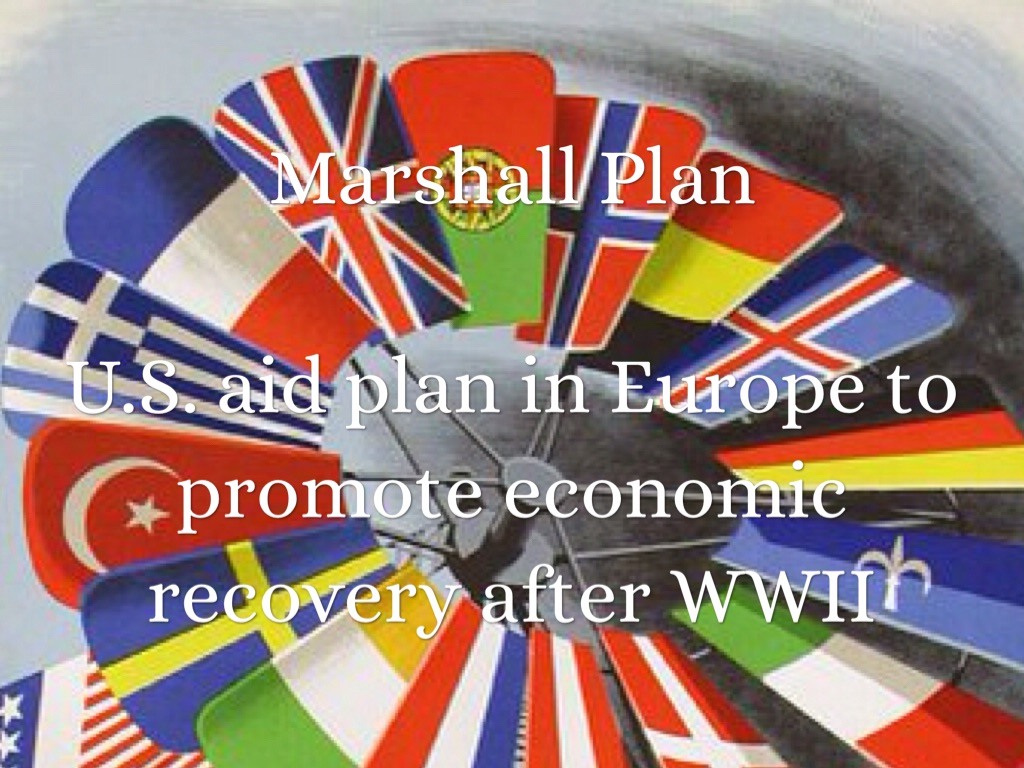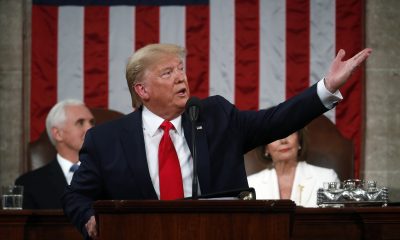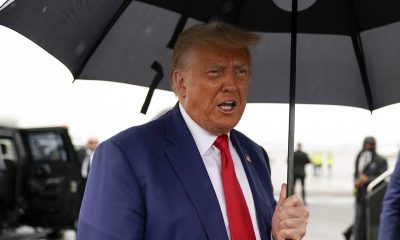Comments and Issues
The Marshall Plan and “America first”
Published
7 years agoon
By
Olu Emmanuel
Over the years 1948-1952, the US devoted the equivalent of $800 billion in today’s dollars to the reconstruction of western Europe. But whereas the Marshall Plan is widely regarded as the largest and most effective foreign-aid program in history, it is less widely appreciated for being the most successful example of an “America First” foreign policy.
Six months into Donald Trump’s presidency, the White House website still proudly proclaims his administration’s new “America First Foreign Policy.” No longer will the United States allow its physical and economic security to be undermined by what Trump calls “bad deals.” Alliances and trade pacts will all be revisited and, where necessary, renegotiated to ensure that “American interests” are paramount.
What is striking about this policy, however, is not that it places American interests first. It is the misguided way in which those interests are being defined.
In the immediate aftermath of World War II, the US established cooperative structures designed to address the catastrophic failure of international economic and security arrangements in the inter-war years. From 1945 to 1949, the administration of President Harry S. Truman propelled the establishment of the United Nations, the International Monetary Fund, the World Bank, the General Agreement on Tariffs and Trade (GATT), and the North Atlantic Treaty Organization. And the 1947 Marshall Plan created the institutional machinery that, over the subsequent decade, paved the path to European integration and the eventual creation of the European Union.
These ambitious undertakings were a conscious repudiation of George Washington’s admonition, delivered in his Farewell Address at the end of his presidency, that the US should avoid foreign entanglements, particularly with Europe. They were born not of charity or naiveté, but of a clear-eyed recognition that America’s role in the world had to change as its global connections, and therefore its vulnerabilities, expanded. As Senator Arthur Vandenberg, once a leading Republican isolationist, reflected: “My convictions regarding international cooperation and collective security for peace took firm form on the afternoon of the Pearl Harbor attack. That day ended isolationism for any realist.”
From Isolationism to Global America
Vandenberg became the Republican Party’s driving force in support of the legislation that financed the Marshall Plan, the 70th anniversary of which is being commemorated this summer. With Britain’s empire collapsing and Stalin’s ascendant, US officials under Secretary of State George C. Marshall set out to rebuild Western Europe as an integrated bulwark against communist authoritarianism. This massive, costly, and ambitious undertaking would confront Europeans and Americans alike with a vision at odds with their history and self-conceptions.
Over the years 1948-1952, the US devoted $130 billion in current dollars to the reconstruction of Western Europe. As a share of total US output over the period, this would be equivalent to $800 billion today. But whereas the Marshall Plan is widely regarded as the largest and most effective foreign-aid program in history, it is less widely appreciated as the most successful example of an “America First” foreign policy.
ALSO SEE: Trump’s growth charade
Of course, the humanitarian impulse underpinning the Marshall Plan remains at the heart of its enduring legacy worldwide. But the plan was, in fact, the first major component of the new Truman Doctrine, which pledged US support for “free peoples who are resisting attempted subjugation by armed minorities or by outside pressures,” and of George F. Kennan’s strategy to “contain” the Soviet Union. (Kennan’s famous “X” article in Foreign Affairs, “The Sources of Soviet Conduct,” also recently marked its 70th anniversary.)
Marshall’s State Department believed that unless war-torn Western Europe could be quickly rebuilt, and confidence in liberal-democratic government restored, the European public would seek salvation in populism and authoritarianism. Such a shift among America’s most important trading partners would in turn undermine America’s own physical and economic security, necessitating a massive increase in defense expenditure and government economic control. Only by ensuring that the US had strong, independent allies and stable trade and security relationships, Truman and Marshall believed, could it hope to maintain its own freedoms and way of life.
Establishing a stable environment within the 16 Marshall Plan countries, and thereby enabling trust and cooperation to take hold among government, business, and workers, was vital to the reestablishment of a market economy in Europe. And across the participating countries, US security guarantees and financial support were indispensable to enabling reconstruction and integration to proceed without generating unmanageable domestic or foreign conflict.
Doing Well by Doing Good
Contrary to Soviet propaganda and revisionist Western accounts, America did not aid its allies by forcing its surplus production on them. Had that been the case, Europe’s balance-of-payments deficit (known then as “the dollar gap”) would have widened, which in turn would have frustrated America’s aim to foster European integration. Such a policy would also have exacerbated the postwar shortages that still affected the US economy.
Instead, the Truman administration, supported by a striking change in the priorities of American business lobbies, orchestrated a deft policy shift. Backed by a bipartisan consensus, Truman moved the US from protectionism toward encouragement of imports.
The Marshall Plan’s lead official in Europe, Ambassador Averell Harriman, was steadfast in insisting that “the purpose of [US aid] is to stimulate countries to help themselves,” and that, consistent with the legislation authorizing it, the funds could not be used “to buy surpluses” from “American industry.” In turn, the National Association of Manufacturers (NAM), America’s premier business lobbying organization at the time, warned its members that “efforts to direct [Marshall] funds to [exporting surpluses] must be firmly resisted.”
The Chamber of Commerce, America’s other major business lobby, echoed NAM, stating that “US exports [must] be consistent with the ability of our customers abroad to pay for them by their own exports.” A State Department directive further stressed that whereas the US sought “non-discrimination in world trade, it is recognized that during the period in which Germany’s balance of payments is in substantial disequilibrium, [it] will, like other countries in the Organization for European Economic Cooperation, find it necessary to restrict imports.” The State Department insisted, therefore, that the US High Commission in Germany not interfere in German trade policy.
ALSO SEE: The Protocols of Donald J. Trump
Germany First
American underwriting of the European Payments Union (EPU) from 1950 to 1958 deliberately redirected West European imports from the US to Germany. Western Europe’s large dollar deficits between 1945 and 1948 reflected Germany’s disappearance as its main capital goods supplier. The region’s massive reconstruction needs therefore had to be met by the US. But it was an important goal of the Marshall Plan to eliminate simultaneously Germany’s need for American aid and its neighbors’ need for dollar imports by restoring Germany to its traditional export role.
This effort was assisted by a relaxation of official US resistance to currency devaluation abroad. The US recognized, for example, that if Germany could not devalue the new Deutschmark it would simply “revert to [the] tactics of the 1930s” through which it “fostered … exports by dumping and other unethical methods.”
This represented a departure from the mindset of Harry Dexter White, the architect of the 1944 Bretton Woods conference under President Franklin D. Roosevelt. White’s approach was to support US exports by prodding indebted countries to keep their currencies overvalued and to finance trade deficits with more debt – that is, IMF loans. By contrast, under the Marshall Plan, greater US openness to imports and a stronger dollar helped smooth implementation of the GATT and spur a revival of international trade generally.
By recreating a European division of labor, with Germany importing raw materials and exporting capital goods, the Marshall Plan succeeded in cutting the transatlantic umbilical cord through which Western Europe was sucking in unaffordable dollar imports of coal and other industrial supplies. As Europe’s dollar balance strengthened under the EPU, doubling between 1950 and 1956, its governments’ incentives to discriminate against dollar imports weakened as well. The higher dollar balance thus enabled the Marshall Plan countries to begin restoring currency convertibility after the EPU wound down.
The financial assistance provided by the Marshall Plan was also organized in a way that departed from earlier, less successful American efforts. Instead of extending new loans to Europe and deepening its indebtedness, the US wiped out Germany’s debt and extended grants-in-aid to the participating countries. The grants provided a cushion with which the recipient governments alleviated the short-term hardships and insecurity that accompanied important homegrown economic initiatives. And, by severely denting popular support for Western Europe’s Communist parties, which wanted to reject the aid, the Marshall Plan helped America achieve a primary political objective.
The Aid that Ties
The Marshall Plan was, of course, only one component of America’s containment strategy in the early years of the Cold War. Yet economic rehabilitation became a primary tool of its so-called strongpoint defense of critical geostrategic regions, in Northeast Asia as well as in Europe, aimed at building up independent, self-confident, and energetic centers of power capable of resisting Soviet pressure.
“The recovery of Western Europe is a twenty-five to fifty-year proposition,” Republican Senator Henry Cabot Lodge, Jr. wrote to Vandenberg in October 1947, “and … the aid which we extend now and in the next three or four years will in the long future result in our having strong friends abroad.” How right he was. America’s containment doctrine successfully guided US foreign policy between appeasement and war for four decades, and the Marshall Plan played a principal role in binding the West together for the struggle.
When the Berlin Wall fell in 1989, so did the communist alliances, which had been built and maintained by Soviet domination and the Kremlin’s willingness – as demonstrated in Hungary in 1956 and Czechoslovakia in 1968 – to impose its will by force. By contrast, the alliances America built, having been forged on genuine partnership and enduring American allegiance, were as strong as ever.
But for how much longer will they remain so? Trump has already walked away from the Trans-Pacific Partnership and the Paris climate agreement. He has threatened to tear up the North American Free Trade Agreement and toyed with the sanctity of America’s commitment to the security of its NATO partners. In the name of “America First,” Trump risks transforming US allies into free agents – all of whom, like Trump, will go in search of a better deal. In an age in which America’s relative economic and military power is necessarily declining, this is foolhardy.
Article 5 of the North Atlantic Treaty – NATO’s mutual defense guarantee – has been invoked only once in the Alliance’s 68-year history. It was invoked not by the US, but by its allies, after New York and Washington, DC, were attacked on September 11, 2001. Could the Trump administration count on such solidarity today? If not, it should ask whether it really wants to allow China, Russia, and others to rewrite the global norms that formed the foundation of America’s post-war prosperity and security.
You may like


Ogun multiple road crashes claim six lives


Katsina: Police confirm rescue of 30 abducted children


Gov. Yusuf distributes palliatives to hospital patients in Kano State


Osun govt addresses possibility of lifting curfew on Ifon, Ilobu communities


Far-Right Republicans want Donald Trump as next House Speaker


US election: Trump pulls out of Republican primaries debate
Trending

 Football5 days ago
Football5 days agoGuardiola advised to take further action against De Bruyne and Haaland after both players ‘abandoned’ crucial game

 Aviation7 days ago
Aviation7 days agoNCAA suspends three private jet operators for engaging in commercial flights

 Aviation6 days ago
Aviation6 days agoDubai international airport cancels flights as flood ravages runway, UAE

 Featured3 days ago
Featured3 days agoPolice reportedly detain Yahaya Bello’s ADC, other security details

 Comments and Issues5 days ago
Comments and Issues5 days agoNigeria’s Dropping Oil Production and the Return of Subsidy

 Education4 days ago
Education4 days agoEducation Commissioner monitors ongoing 2024 JAMB UTME in Oyo

 Business4 days ago
Business4 days agoMaida, university dons hail Ibietan’s book on cyber politics

 Featured1 week ago
Featured1 week agoRelationship between Oyetola, Omisore remains cordial — Osun APC

